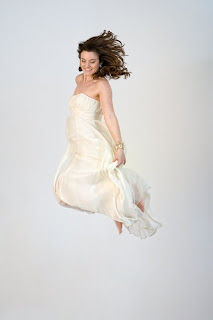- May I see one or two entire weddings that you’ve photographed?
I would be happy to provide you with 2 or 3 full weddings to view from my proofing galleries.
- How many images do you shoot at a typical wedding?
I will shoot anywhere from 750 to 1500 photos depending on how many hours the wedding day lasts and how much is going on during the day. Many times I will take 2 or 3 photos of the same subject to be able to choose the best one out of the shots. Best one means, expression, lighting, background/composition.
- How many images do you typically deliver to your clients?
On average 350-600 images are post processed and delivered. Once again, depending on how long the wedding is and how much activity there is. If there are none of the traditional reception events (bouquet toss, cake cutting) then I will get portraits and head shots of guests as often as possible.
- When can I expect to see my photographs?
For me this is a definition between proof image and finished image. I use to give my clients the proof wedding images but always felt they were lacking. At this point I post process each photograph to a completed state. I color correct the photographs, apply tonal changes to accent the center of interest, change the wedding photos to Black and White, add a fashion look or use traditional wedding processing. 400-600 images can take me 3-4 weeks to totally finish.
- Do I get the high resolution files? Is there an additional cost, and may I make prints from those files?
Yes, no, and yes. Additionally I also re size the photos for viewing on a website since that is 72dpi.
- What is your backup plan should you become ill?
I would have to be seriously ill not to show up to photograph a wedding. But if that does occur I know a dozen wedding photographers in the area that have their own business.
- Do you have back up equipment?
I think this is one of those differences between an amateur and pro photographer. I have spent a considerable amount of money on professional level Nikon equipment. Additionally, I have duplicate pieces of equipment if anything breaks or malfunctions. Two cameras, five lenses and three flashes.
- Do I need to provide you with a meal?
Yes. After working for 5-6 hours a wedding photographer gets really hungry. I would think about feeding the staff of a wedding event so they can keep their energy level up for the rest of the night.
- Are you insured for liability and equipment?
Another one of those expenses that separates the professional from the amateur. Yes.
- Do you bring an assistant?
At this point I do not have an assistant.
- Can you photograph our ceremony without flash?
My wedding style is to have one camera with flash and one camera with a fast prime to capture the natural light. Natural light photography is one of my favorite was the capture a wedding. So yes, I would use 2 cameras with fast primes and no flash.
- What is included and what is extra? Is there anything you recommend we add? Why?
If there are over 150 to 175 guests I would recommend a second photographer. Not an assistant but another set of eyes that can capture more of those away from the couple moments. I always try to get at least one photo of each guest at a wedding. But after 150-175 people that is not as assured.
- Are other people allowed to take pictures while the photographer is?
Yes, as long as they understand that I am the professional photographer and may have to stand where they are standing at one point. The reason why other photographers can be a problem to the hired photog is that they block the photog from taking photos at different angles. But another issue is during group photos. The people being photographed don't know where to look and you can get people looking in all different directions.
I enjoy having guests as photographers. When I set up a pose I usually let the guests photograph first so I can avaoid the subjects from being distracted while I am photographing them. I will also help any guest photographer (lend them equipment, give technical advice).
- What preparation do you do to get the most out of your time with your clients?
- What is your favorite part of a wedding day to photograph?
I really like the ceremony.
- What has influenced your photography style the most, and why?
My photography style s mostly photojournalistic during the casual shots and fashionesque during the portrait shots.
I believe that flowing with the energy of the wedding is paramount to capturing the story, the feeling and the celebration of the event. Improvisational casual photography.
During the formal photos I work to get a more editorial and studio style of photograph. Lighting, posing the clients and post processing all move towards a fashion magazine look.
- Why are you a wedding photographer?
I love weddings. I think it is not only a huge responsibility but also a great honor to photograph someones wedding. It is one of the reasons I love being a photographer. Weddings energize me, fill me full of joy and happiness. I think my photographs reflect that happiness during the event.













